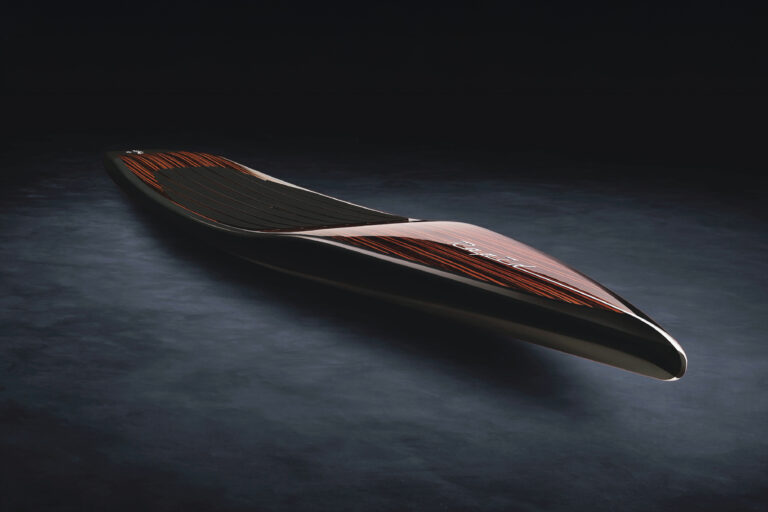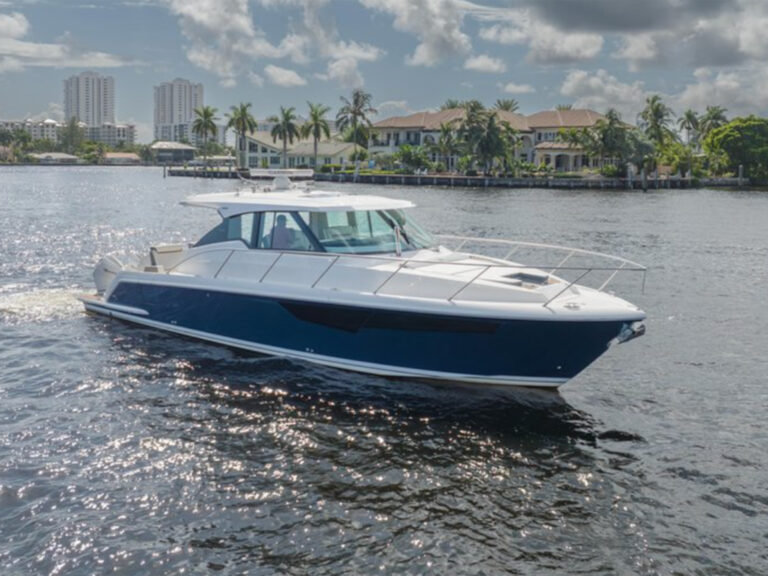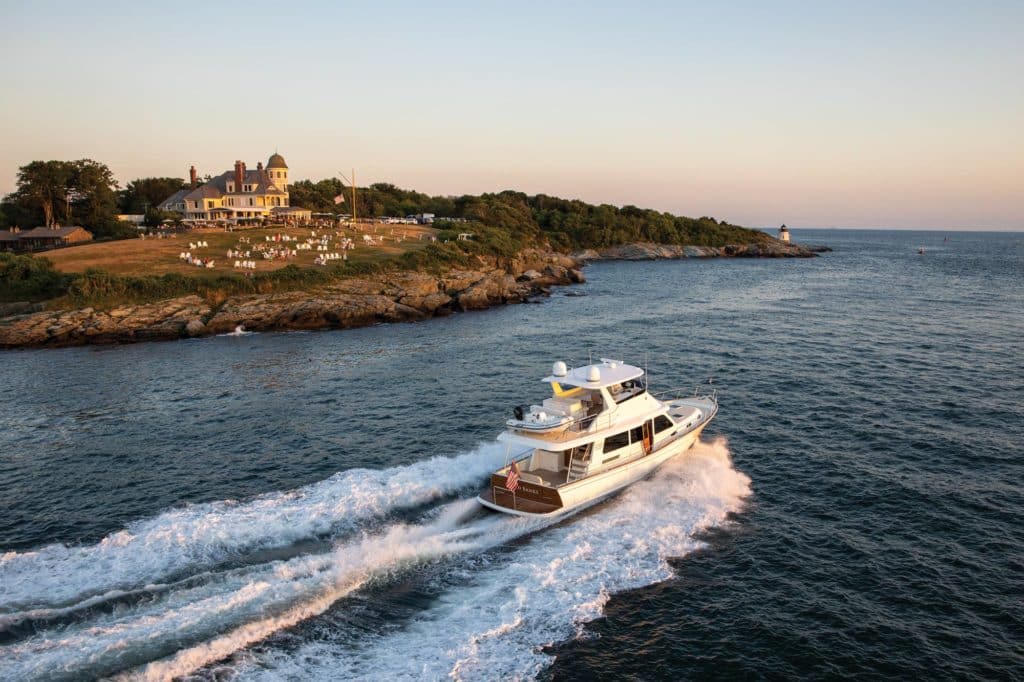
Some yachts put up a thin veneer of seakeeping confidence, stout construction materials and quality machinery. Those yachts are the opposite of the Grand Banks 54.
On this boat, where I might expect to find a facade, I instead encountered the real deal. Solid-teak mullions. Solid-teak soles. Watertight engine-room bulkheads. An air-conditioning system that doesn’t merely circulate cool air but instead creates a potent breeze. Magnetic catches so strong, they’ll never let the doors fly open in a seaway.
Resins are all epoxy vinylester. Virtually all parts of the vessel, including the hull, are vacuum-infused to minimize weight while maximizing strength. The deckhouse and superstructure are carbon fiber, ensuring structural integrity while lowering the center of gravity. And the 54′s salon furniture is all structurally bonded and fiberglassed into place, eliminating the creaks and groans that bolted-in furniture inevitably make when lesser yachts are subjected to serious seas.
Everything I saw walking through the Grand Banks 54 illustrates actual strength and serious intelligence in construction.
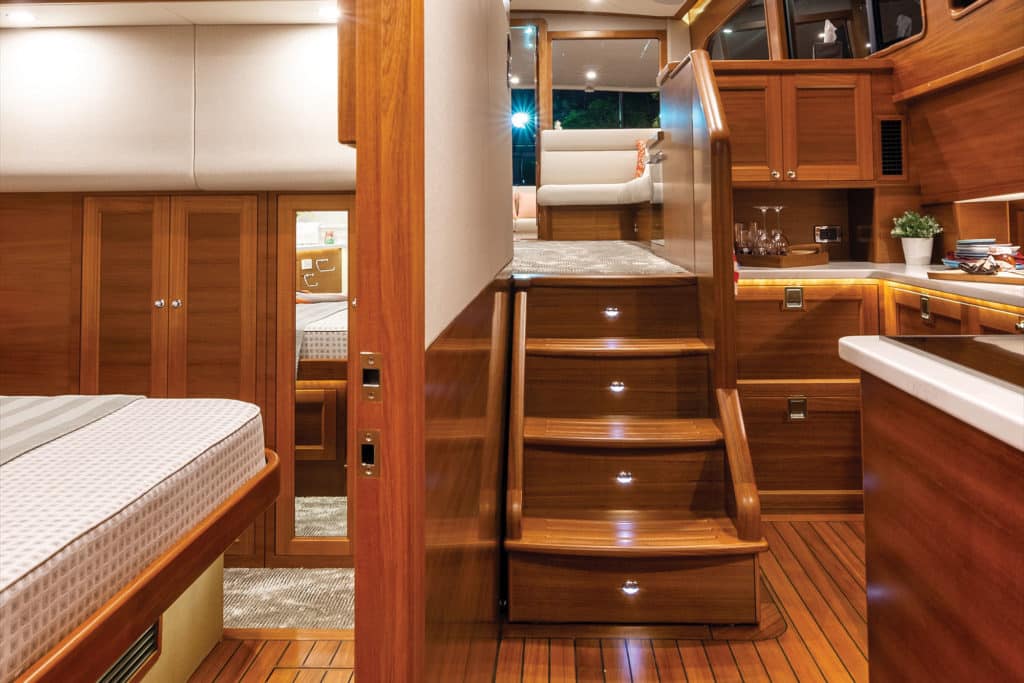
The 54 is the kind of yacht that begs for a ride in the rough stuff, but unfortunately, I didn’t have challenging conditions when I ran it. My time aboard was on a relatively calm Chesapeake Bay. There was quite a bit of boat traffic and thus plenty of wakes to run into and roll over—or so it would seem.
Between its 8-degree transom deadrise, warped semidisplacement hull form, and Humphree interceptor and stabilizer system, the 54 cut through 2-footers with virtually zero effect. Paralleling other boat wakes and taking them on the beam produced a similar absence of any response.
And—surprise—unlike the Grand Banks models of yore, the 54 can probably keep up with the sport cruisers out there on the water. Powered with twin 725 hp Volvo Penta D11 diesel inboards, the 54 broke 27 knots, and that was with full loads of fuel (898 gallons) and water (290 gallons). The builder says it has seen 30-plus-knots with a lighter load. Cruising at 1,800 rpm, the yacht made 18.7 knots and maintained 0.5 nmpg. Even though this hull can get up and go, it’s still efficient at displacement speeds. Idle at 600 rpm to take a 5.2-knot cruise for a range of 2,604 miles. That means owners could make a 12-day trip from Kennebunkport, Maine, to Key West, Florida, and arrive with enough fuel to putter around for another 1,000 nautical miles or so.
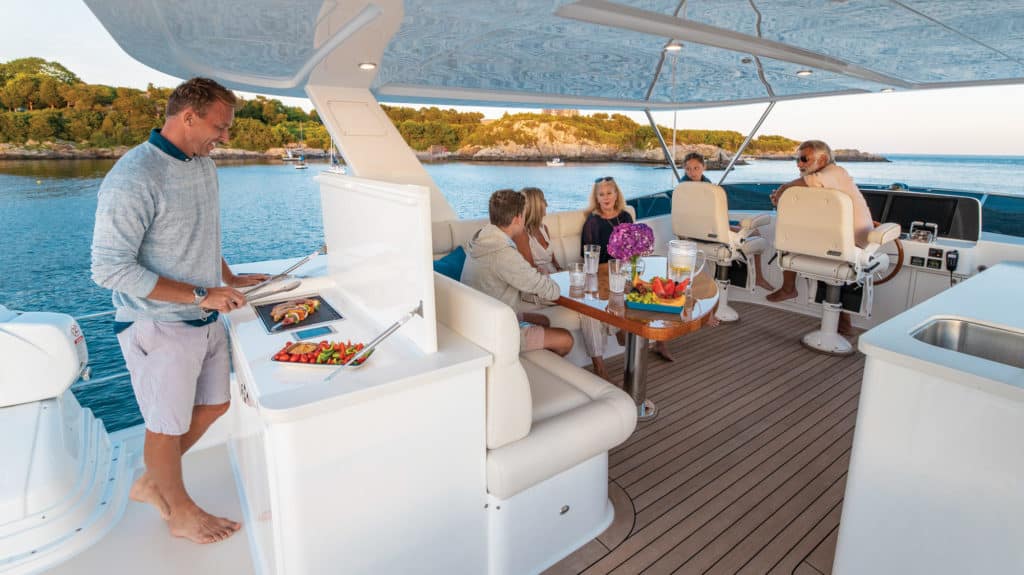
For owners who want to go a bit faster and run even more efficiently, Grand Banks says the 54 can be powered with Volvo Penta’s IPS950s, though the builder says the straight-shaft version runs smoother. For many long-distance cruisers, a smooth cruise is a big perk. This boat is not only comfortable but also surprisingly quiet; the engine room is insulated with 2 inches of Sorberbarrier AGC soundproofing. Sitting at the helm at all speeds, I found vibration and sound levels far below what I expected.
On a yacht of this nature, of course, I do expect to enjoy a comfortable cruise whether I’m watching the wheel from the double-wide helm seat, lunching at the L-shaped six-seat dinette, stretching out on the starboard-side settee, or digging my toes into the sisal carpet. This comfort level is also found on the flybridge. The forward half the 54′s flybridge has Stidd helm and companion seats, a dinette, and a wet bar. (The after half is dedicated to a davit and tender.) I looked closely at the beefy stainless-steel frame around the entry and noticed that every screwhead in the frame was aligned in the exact same orientation.
Veneers? Facades? Those are nice-looking but are superficial ornaments. I can find those things on plenty of yachts, but they would be anathema aboard the Grand Banks 54. This yacht is the real deal, through and through.
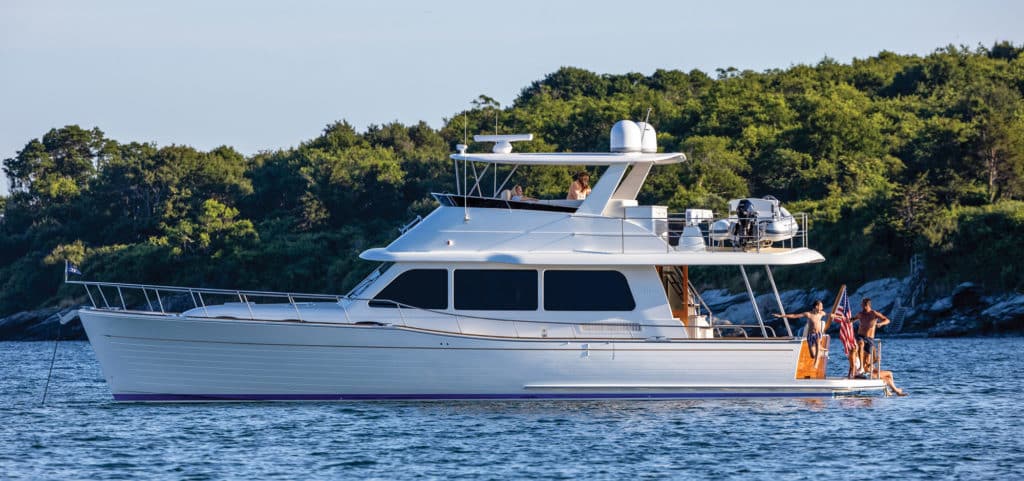
Walking the Walk
The nicest thing about walking from bow to stern on the Grand Banks 54 is how safe I felt. Not only are the side decks ringed with stout rails, but they’re so wide that I could stand sideways with size 12 shoes and still have 2 inches of wiggle room left over.
Function and Form
The engines aboard the Grand Banks 54 are farther forward than on many yachts, to keep the weight centered and balanced. As a result, there’s an open area between the powerplants and machinery space. Stainless-steel rails line the compartment, so owners can use the area for bulk stowage while the hydraulics and steering gear remain protected. For easy access to the machinery, Grand Banks mounts the rails on quick-release pins.
Owner’s Choice
To provide owners with customization options, Grand Banks offers the 54 in galley-up and galley-down arrangements. In the galley-up version, there are three staterooms belowdecks, with the master forward and guest staterooms to port and starboard. With the galley-down version, there are two en suite staterooms, both with queen-size berths.
Take the next step: grandbanks.com





